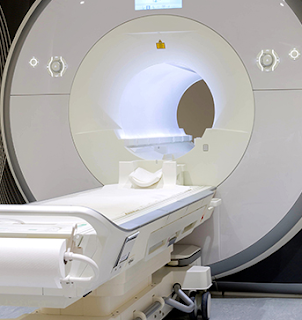Functional magnetic resonance imaging, also known as fMRI, is a method that does not need any risky or intrusive procedures and may be used to measure and map the activities of the brain under both normal and pathological situations. It detects the variations in blood circulation in the cerebral area that occurs in response to brain activity.
The fMRI is a widely used method in radiology that generates high-resolution images with excellent contrast between various brain structures. The concept that the nucleus of a hydrogen atom exhibits the characteristic of a tiny magnet is the foundation of the fundamental principle of functional magnetic resonance imaging (fMRI). The principle of nuclear magnetic resonance is used in functional magnetic resonance imaging. Nuclear magnetic resonance is a physical phenomenon in which specific atomic nuclei that are present in a powerful stationary magnetic field specifically absorb very high-frequency radio waves and create an electromagnetic signal with a frequency of the magnetic field at the nucleus.
In fMRI, a powerful magnetic field is used to align hydrogen atoms that would otherwise be randomly orientated inside the water nuclei of the targeted tissue. These nuclei are able to absorb energy and generate a signal (called a magnetic resonance signal) when a radio frequency magnetic pulse is applied at a suitable frequency. This signal may then be picked by the radio frequency coils that are a part of the MRI setup.

The change in fMRI signal due to a change in brain activity is an indirect effect that depends on how the change in neural activity affects the flow of blood to the brain. The level of blood oxygenation rises with higher brain activity because more oxygen is needed to meet the body's increased energy demands. Blood that is oxygen-rich and blood that is oxygen-poor actually have different magnetic characteristics because of the differing amounts of hemoglobin that bind to the oxygen in the blood. The signal would be stronger when the blood has more oxygen in it and vice versa.
fMRI Pros
Unlike X-rays, computed tomography (CT), and PET scans, fMRI emits no radiation. FMRI almost carries no dangers when performed properly. It is a reliable, non-invasive method for evaluating brain function. The images that are produced by fMRI are of very high resolution, and the equipment is fairly simple to operate. Furthermore, fMRI is far more objective than the conventional questionnaire methods of psychological assessment.
fMRI Cons
Unfortunately, fMRI is not without its drawbacks.
- First of all, it is costly.
- Second, the subject being scanned must remain perfectly motionless for the device to acquire a clean image.
- The main criticism from scientists is that fMRI can only observe brain blood flow.
- It's difficult to determine exactly what kind of brain activity is being reflected on an fMRI scan because various parts of the brain that are "illuminated" may represent several different functions.
- Furthermore, it may be challenging to understand the results of an fMRI scan.
- goog_1460263831By focusing on individual neurons, researchers want to make fMRI more "meaningful" and increase its reliability in the future.







0 Comments
For comments please reply here.......